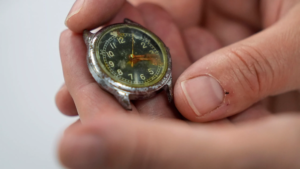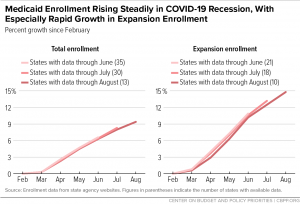Wi-Bwa Grey brings a unique perspective to Arizona’s Missing and Murdered Indigenous Peoples Task Force: that of a survivor.
“I know what it’s like to be missing,” Grey said, and she could not say this until this past year because it’s still fresh in her mind.
Grey, a council member for the Salt River Pima-Maricopa Indian Community, said at the task force’s inaugural May 8 meeting that her experience compelled her to join the task force that Gov. Katie Hobbs created. She said she hopes her experiences can be helpful in how the task force will approach the MMIP crisis in Arizona.
“I can offer that perspective to this task force,” she said. “I hope it can be valuable.”
“As a survivor, I’m ready to fight,” Grey added. “I’m ready to fight on this task force.”
As much as anything, Grey said she wants the task force to bring back some hope to Indigenous people because she understands how many families have lost hope.
“They feel like no one cares and that no one is listening,” she said, recalling how families had told her how they’ve felt that law enforcement did not listen to them when they were reporting their loved ones missing.
“That needs to change,” Grey said, and she hopes to do that through the collaborative efforts on the MMIP task force. “We need to gain our voice back.”
Indigenous people have been advocating for missing and murdered Indigenous peoples for generations. But it’s only within the last few years have state and national officials started to pay attention.
Indigenous women face murder rates that are more than 10 times the national average, according to the U.S. Department of Justice. And the National Institute of Justice found that 84% of Indigenous women experience violence in their lifetime, compared to 71% of white women.
Homicide has been reported as the fourth-leading cause of death among Indigenous women under 19 and the sixth-leading cause of death for ages 20 to 44, the Centers for Disease Control and Prevention found.
For many Indigenous people working on addressing the MMIP crisis, these numbers are not new, but this is the first time they are being prioritized.
Hobbs established the executive task force for Missing and Murdered Indigenous Peoples in March, and it’s the first time an Arizona governor ever signed an executive order to establish such a task force.
The task force will prepare and submit a report to Hobbs with recommendations for administrative or legislative action on or before Dec. 1 of each year through 2026
During the first meeting, Hobbs told the task force members that she was happy for their commitment to addressing the MMIP crisis in Arizona because the task force includes members of the state legislature, representatives of tribal nations, law enforcement professionals and members of the public with backgrounds in victim advocacy, legal services, and health services.
“Your perspectives and experiences will be critical to finding meaningful solutions to address the challenges facing indigenous communities,” Hobbs told the task force members.
Hobbs said that the task force will work and consult with government agencies, collect data, review policies and propose recommendations that will develop pathways for justice for missing and murdered Indigenous peoples.
“I encourage you to think critically and creatively,” Hobbs added. “It will require us to work together to find solutions and to take courageous actions to address where we have fallen short in the path.”
Arizona established its first MMIW study committee in 2019 through legislation after continuous efforts from grassroots advocates and legislators.
The study committee issued a report in 2020. It found that 160 murders of Indigenous women were recorded in Arizona from 1976 to 2018 — and that murders among Indigenous women and girls have steadily increased over the last 40 years.
After that committee disbanded, legislators and advocates worked together to establish a second committee in 2022 when then-Speaker of the Arizona House of Representatives Rusty Bowers approved the committee on an interim basis. It was refocused to include all missing and murdered Indigenous peoples, not just women and girls.
The MMIP interim committee held its last meeting in December 2022. It released a report that included 83 recommendations for the state in nine key areas: legislative, administrative, Arizona victim compensation program, victim services, data improvement, resource allocation, training and education, collaborative and law enforcement.
The new MMIP task force has 14 members, and Hobbs named State Sen. Theresa Hatathlie as its chair.
When Hatathlie was appointed chair on May 5, she said she is committed to advocating for Indigenous people by working diligently with Hobbs and other leaders to provide direction for cross-departmental and interagency work involving MMIP.
“This task force will address measures to prevent this ongoing tragedy, as it not only demeans the dignity and humanity of each person who goes missing or is murdered,” she said.
During the May 8 meeting, Hatathlie said she’s advocated for various causes over the years, and the topic of Missing and Murdered Indigenous Peoples is not new for her.
She was involved with the previous study committees and has worked alongside other advocates and leaders to raise awareness about issues impacting Indigenous communities across Arizona.
Hatathlie said seeing tribal communities being exploited does not sit well with her, and she hopes the work with the task force will lead to change through legislation.
She wants to change laws and look for sustainable ways of continuing to fight the MMIP cause.
As part of the meeting, each task force member introduced themselves and shared why they were there and part of the task force. The answers varied, ranging from accountability, honoring families, building awareness, and filling service gaps.
The task force includes people who have worked with the Arizona study committee before and people joining the efforts for the first time on a state level.
Salt River Pima-Maricopa Indian Community Council Member Mikah Carlos is joining the task force for the first time.
“We have a responsibility for ensuring the longevity of our people, and we can’t do that if we don’t have the tools to intervene and make sure that they’re safe and that we’re able to protect them,” she said. “These are our people, these are our relatives, and I think we have a duty to make sure that we can advocate for them on any level that we need to.”
Another member joining the task force is Navajo Nation Council Delegate Amber Crotty, who has been an MMIP advocate for years at the tribal, state and federal levels.
Crotty said she is coming to the task force not only as a tribal official but as a mother. She shared what it was like in 2016 when the Navajo Nation suffered a significant loss when 12-year-old Ashlynne Mike was abducted and killed.
Crotty said through that tragedy, they learned how the system failed. When Mike went missing, there were still limitations in jurisdictions when reporting someone missing, they encountered 911 issues and Amber Alert issues.
To honor Mike, Crotty wears a yellow scarf with different colored flowers, as yellow was Mike’s favorite color. On the Navajo Nation, it is known as a Saanii scarf, Crotty said, and it has become a symbol of strength and comfort. She said she wears the scarf to honor Mike’s life, and all the colors in the scarf represent her life.
Crotty said that she wants to humanize these experiences because that humanity is what is taken from Indigenous communities. The harsh reality, she said, is that rather than looking at Indigenous people as humans, the system has looked at them as others.
“That no longer can stand,” Crotty said. “That’s why we keep showing up.”
Task force member Alfred Urbina, the attorney general for the Pascua Yaqui Tribe, has been involved in the previous legislative panels. He said that the MMIP crisis needs to be seen as an ongoing injustice, public health and public safety crisis, as well as a civil rights issue.
“We have to hold ourselves accountable as justice officials,” Urbina said, adding it’s the task force’s responsibility to work collectively with federal, state and tribal partners.
“We don’t have time,” Urbina said because Indigenous people are dying and missing. “We need a sense of urgency, and it’s our responsibility just like it’s the state’s responsibility and the federal government’s responsibility.”
Indivisible Tohono co-founder April Ignacio is another task member brought over from the study committee, and she hopes to hold the task force accountable for their work.
“I’m here to basically continue to hold our elected officials accountable to the people they serve,” Ignacio said. “My active role in this is to ensure that we stay focused on the gaps and services that are often pushed to the side when it comes to survivors and family members.”
The other task force members include Alane Breland, chief prosecutor for the Salt River Pima-Maricopa Indian Community; Capt. Paul Etnire, state trooper with the Arizona Department of Public Safety; Jasmine Blackwater-Nygren, first lady of the Navajo Nation; Jerome Kasey III, vice chairman of the White Mountain Apache Tribe; Kim Russell, director of the Arizona Advisory Council on Indian Health Care; Monica Antone, lieutenant governor of the Gila River Indian Community; Myron Tsosie, Arizona State Representative; and Nick Debus, government affairs director at the Arizona Attorney General’s Office.




